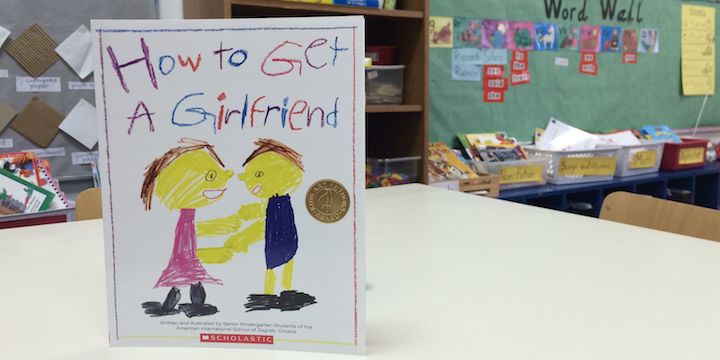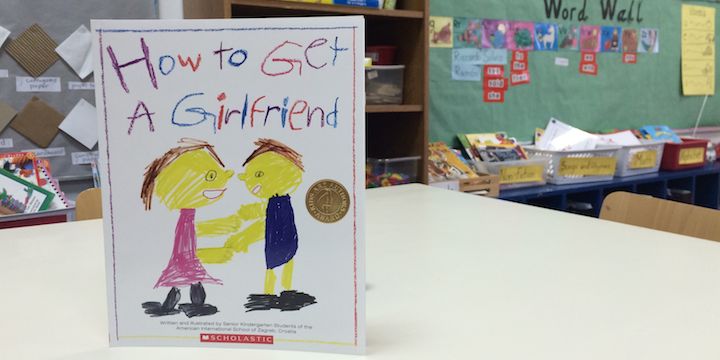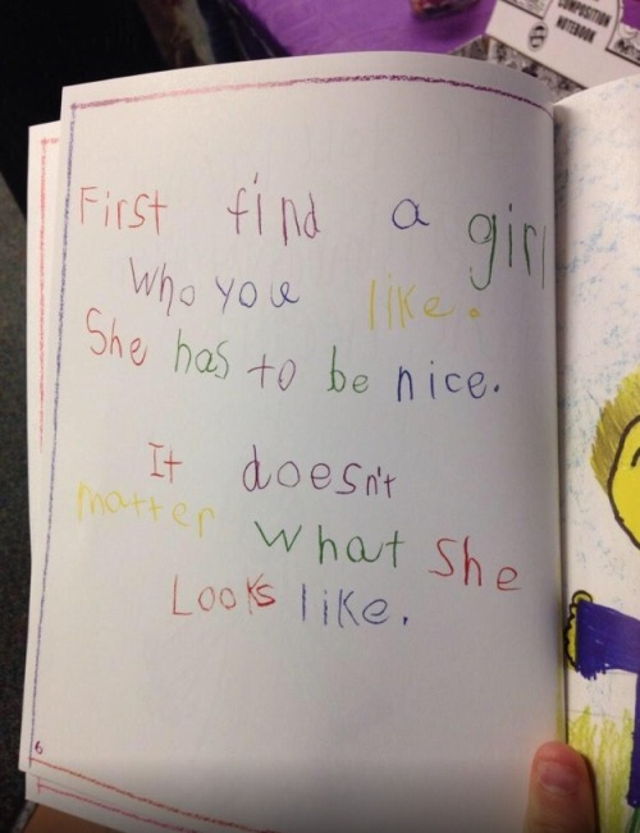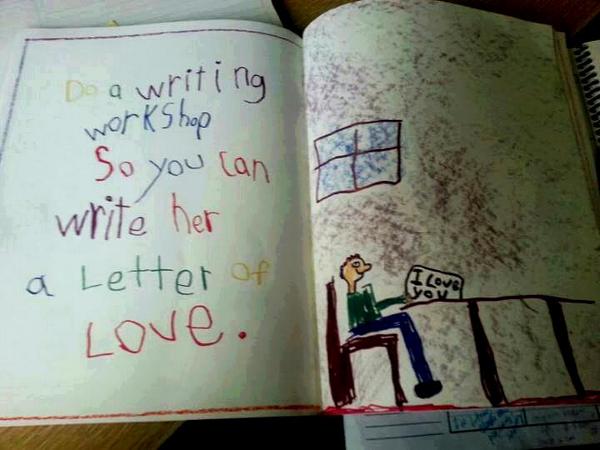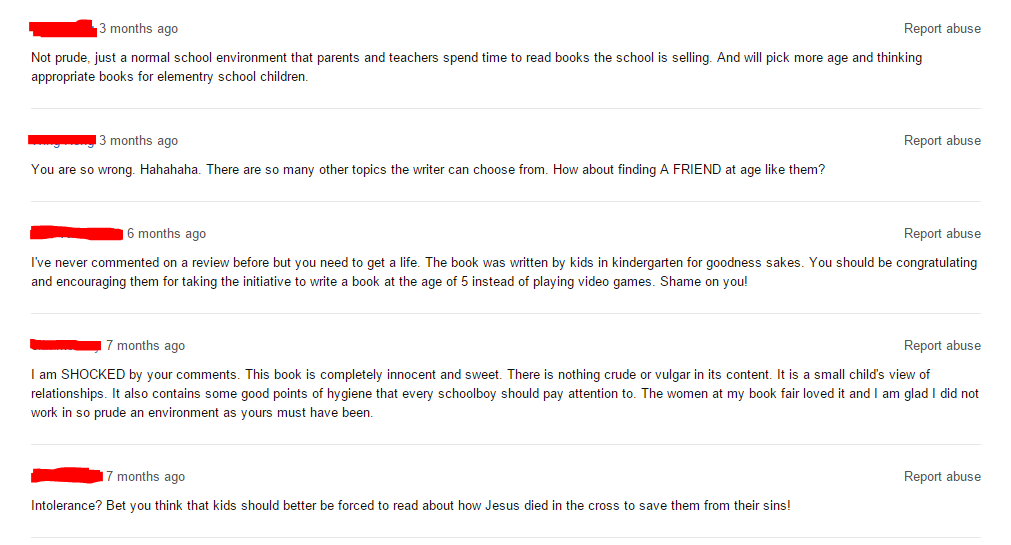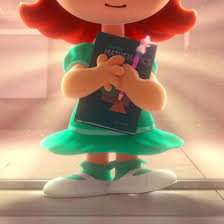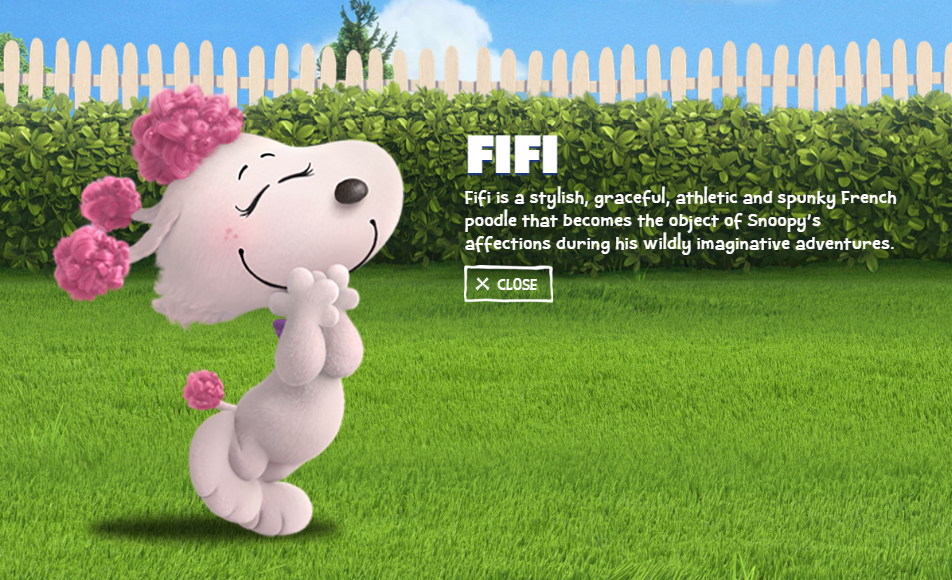Cover art image courtesy of Croatia Today Magazine
Recently I was lucky enough to volunteer at my son’s school book fair. He’s in Kindergarten now, and about to turn 6 years old. It was his first real book fair, as opposed to the flimsy scholastic book order forms that get sent home with too little notice, then immediately get lost on the kitchen counter.
I showed up on an early morning, strapped on my 6-month-old daughter, and awkwardly asked the more veteran mommy volunteers what I was supposed to be doing. I was too new to work the cash register, and there were only a few kids wandering around that early.
So, while straightening shelves and waiting for the next batch of kids to arrive with their Ziploc baggies full of money, I familiarized myself with some of the offerings. The book fair was broken up into sections by age/grade level, and by reading level. In the Kindergarten/early reader book section, I found a book called How to Get a Girlfriend.
At first, my eyes passed right over it, thanks to the hand drawn child’s doodle on the cover. Then, on a second pass, I actually read the cover. I had been looking for books that would inspire my son to strengthen his story-telling skills, an area of opportunity for him according to his speech therapist. Upon looking at this book cover, I went pretty quickly from feeling intrigued to horrified.
How to Get a Girlfriend is a how-to guide written and illustrated by a group of Kindergarteners. At first I thought, “this must be a silly joke — a take on girlfriends and boyfriends written by kids.” Oh, how wrong I was.
Right off the bat, How to Get a Girlfriend is 100% a guide written by boys, telling other boys what they need to do to get a girlfriend. Very specifically, step by step, with a call-out that the instructions are both for “grownups, and kids.” Examples include:
-“First, find a girl who you like. She has to be nice – it doesn’t matter what she looks like.”
Image courtesy of Aplus
-“Play with the girl a lot, and hug her.”
-“Give her toys, and flowers.”
-“Do a writing workshop* so you can write her a letter of love.”
Image courtesy of @SHFarnsworth
-“It’s fun to have a girlfriend, because you can do lots of things with her and you can play with her.”
I won’t spoil the rest of the tips How to Get a Girlfriend offers, but I can tell you that I was completely thrown off by the fact that this book even exists. Here’s why: Kindergarteners are typically 5-6 years old. You know what 5-6 year old children don’t need to read about or be taught? They don’t need to be taught how males can obtain female dating partners.
This book could have easily been “How to make friends.” Heck, if we’re really married to the idea of writing a dating manual for children, then why couldn’t this book be titled “How to find someone to date/love/marry?”
Where was the teacher? The teacher of these kindergarten-aged authors helped and instructed and allowed this book to be created—and then? Then it got submitted to a competition called “Kids are Authors,” at which the book won an award sponsored by Scholastic, the number one national seller of books for kids in school book fairs.
Maybe I’m off-base here, but I believe that the role of the teacher in my son’s classroom is to teach age-appropriate topics, and to prevent students from being exposed to inappropriate topics by older children. I don’t need teachers to encourage this kind of reading and writing material, when they could be helping students to become respectful, tolerant, open-minded humans.
Say it with me: this boy-gets-girl heteronormative dating manual written by and marketed to five year olds (with the encouragement of their Kindergarten teacher), won an award from the company that decides what books are put in front of our children at their public school book fairs.
Why, oh why, does it have to be ‘boy dates girl’? In most of the illustrations in How to Get a Girlfriend, the only gender indicators are things like the color of the clothing or the shape of the clothing on the person. On the cover, one of the two people doesn’t even appear to be wearing any pants! (I found this to be the only amusing part of the whole book.) Is there any reason in the world that these children couldn’t have been encouraged to write their dating manual without a heteronormative stereotype? Why couldn’t it have included pages about how girls can get boyfriends, or how boys and girls could get same-sex dating partners?
That last sentence, the one I just wrote, is the crux of the problem. It’s not just that I’m baffled that this book won an award, and that it is now sold at most school book fairs in the US — it’s the structure of the book itself. It’s a heteronormative how-to dating manual, which fails to include the options of a girl “getting” a guy, or any diverse representations of LGBTQ+ relationships.
When I expressed my concern with the fact that my son’s school was displaying and selling a dating manual for children during a school sponsored book fair, I was met with varying responses. Some folks, like my son’s teacher, seemed more than a little shocked and disappointed. They felt that if the school really needed to include this book, they could have done so at the older grade levels. Of note, my son’s school caters to no children above the age of 8.
Some, on the other hand, thought that I was the absurd one for being concerned or upset at all. More than a few parents looked at me with disbelief when I took issue with the situation and voiced my concern. One mom literally dropped what she was doing, looked at me with what I can only describe as annoyance, and asked “Did you even read it before you say things like that?” Thankfully, I was able to assure her that I had! Twice.
The idea that I might be “overly concerned” got mirrored by some friends and parents that I greatly respect, and with whom I typically share similar opinions. Honestly, I started to wonder if it was possible that I was just seeing something that wasn’t there. So I looked around a little more.
Amazon’s reviews were similarly split – some reviewers joked about buying it for their teenagers, another said she bought it for her boyfriend as an anniversary gift. Parents and teachers alike got congratulated and metaphorically clapped on the back by anonymous purchasers.
But then, there was this one review:
I wasn’t alone! There was at least one other person who had seen this book and thought it was wrong. And then, along came the parade of idiots, calling my anonymous cohort a “prude” and suggesting they “get a life.”
Is it such a big thing to challenge the idea that our 5-year-old children do not need heteronormativity pushed on them in school, before they can even read or write on their own, in the form of a dating manual wherein boys are told that if they do certain things and find a certain girl they can “get her” as a girlfriend?
When I reached out to The Mary Sue to pitch this article, my editor asked that I look into other examples of heteronormativity in my child’s life (and mine). I started looking around, and I realized what we really need is an article that gives examples of diverse relationship representations. Why? Because 100% of the books, movies, advertisements, shows and games that were readily and easily available to my son in his school and library are heteronormative.
That being said, I’m going to offer up a current and somewhat more accessible example of what I think went wrong with How to Get a Girlfriend – and I’m hoping you can see the similarities here when all is said and done.
The Saturday after Thanksgiving I felt really down and frustrated. We had experienced a family member making some homophobic/transphobic comments during Thanksgiving dinner, and our son had started exhibiting shame behaviors when a relative asked about some of his choices for his Christmas list. (Equestria girls, a starter sewing machine, and a butt-load of Minecraft toys). So, we decided to have some quality family time, and we took him to go see a wholesome family movie at a nearby Cinema-Pub.
We took him to see the Peanuts movie, thinking it was going to be a great cross-generation experience. Buckle up, folks — the hetero train’s a-chuggin’ into the station. (*Spoiler alerts for The Peanuts Movie below*)
Most of us grew up with Charlie Brown in their lives. Some of us watch Charlie Brown’s Christmas every year, others casually quip “I got a rock” when they joke about Halloween.
Apparently, in 2015, the Schultz family (the story was written by original artist Charles Schulz’s son and grandson) and 20th Century Fox decided that a new legacy would live on for this generation of young’uns: Charlie Brown needs to get the Little-Red-Haired Girl to like him, so that he can be a winner. And Snoopy? He needs to track down a Pink-Haired Poodle pilot he saw one time, so that he can love her and defeat the Red Baron.
In case you missed that, the entire plot of The Peanuts movie is based on two parallel story lines. Both of which revolve around a male character trying to find/impress/win-over a female character, so that they can “win.”
Oh, was that not cringe-worthy enough for you?
In true homage to the original comic strips, the Little-Red-Haired Girl does not show her face. In fact, the only change that they felt was necessary to the antique character/plot combination was to choose to show her face (wait for it) for less than a minute, in the last 5 minutes of the 90-minute-long film.
Along those same lines, the Pink-Haired Poodle pilot (badass) that Snoopy spends 90 minutes pursuing? She has neither a name, nor a voice, nor does Snoopy ever actually interact with her or speak with her before he decides that he should spend the entire movie attempting to “get” her. In fact, when he finally has a chance to take down his old nemesis The Red Baron? Pink-Haired Poodle pilot’s plane is shot down by the old foe, and Snoopy gives up his victory to save her life. In return? She joins him in his plane, cuddles up Woodstock (not unlike an infant) and little hearts appear above her head as she nuzzles the side of Snoopy’s. They have not spoken once during the movie before this scene.
Why is this so important to me? It’s important to me because in a movie where Charlie Brown read all of “War and Peace,” wrote a really fantastic book report, demonstrated wonderful acts of honesty, empathy, trustworthiness and respect — and when I asked my 5 year old what his favorite part of the movie was? He told us that he loved that “Charlie Brown got to be a Winner!” (wait for it) “When he got that girl to like him!” When we pushed for more, asking if there was anything else that he liked? “Snoopy fought that other plane, and he saved that girl dog and then she loved him.”
Our family goes out of our way to celebrate diversity. We regularly read books with diverse families represented, and spend time with friends and family members who are both ethnically diverse and members of what I like to call “The Rainbow Spectrum.” Every day we talk about differences, and how they make us all special and wonderful. We point out what beauty is, we praise him for his hard work and effort as opposed to his natural talents. We try so hard, and in 90 minutes, he learned that “to be a winner” he needed to do everything he could to get a girl who had no face or name to like the main character. Multiple times in The Peanuts movie, Charlie Brown suggested that if the Little-Red-Haired Girl didn’t end up noticing or liking him, then all his efforts would be for nothing. For. Nothing.
I guess what I’m saying here is that it’s 2015. Gay marriage is finally legal. In some states, there are many individuals who fall on the Rainbow Spectrum who are finally getting the rights and protections they deserve to be treated humanely. (Not enough, by far — to be clear.) How and why is it possible that every single piece of mainstream media available for our 5 year old children features only heterosexual relationship standards, and almost all of them white?
How and why is a school sponsored book fair selling a heterosexually influenced dating guide to kindergarteners? How and why is there a kindergarten teacher out there somewhere encouraging 5-year-old boys to write a book about how boys can get girlfriends? Why is a nationally renowned and recognized book publisher and seller awarding this book as a gold standard?
As a person who falls under that glorious Rainbow Spectrum, the fact that my current relationship is a male-female one means that many people don’t feel I get to have an opinion. They are wrong.
I have made it my mission for my son to understand that just because he was conceived by a man and a woman, and that his parental figures resemble a heteronormative couple, doesn’t mean that other kinds of relationships don’t exist or are less-than in some way. Despite spending time with many same-sex couples, and with trans individuals, and having open and appropriately handled conversations with him about these things, it seems like it’s an up-hill battle against a sea of cisnormativity and heteronormativity.
After spending time with a friend of his who comes from a same-sex parent family, we walked by a wedding with two brides, and he started telling us that there “must be a mistake” because they were “missing the boy.” Years of hard work keeping his eyes open, and we’re constantly fighting every step of the way to hold that ground, let alone gain more.
Like I said, it’s 2015, and I think it’s time we gave heteronormativity a shelf way up high in the back of a dark closet. It’s time we gave the Rainbow Spectrum a bit more of the spotlight — after all, it’s not really in the closet anymore.
Nicole Tompkins-Hughes is a freelance writer talking about games, tech and all things parenting-related. She is passionate about diversity and equality, and the people that make our worlds go round. She can be found on Twitter @Souriant_Nymh and examples of her work can be found at SeeNicoleWrite.tumblr.com.
—Please make note of The Mary Sue’s general comment policy.—
Do you follow The Mary Sue on Twitter, Facebook, Tumblr, Pinterest, & Google +?



